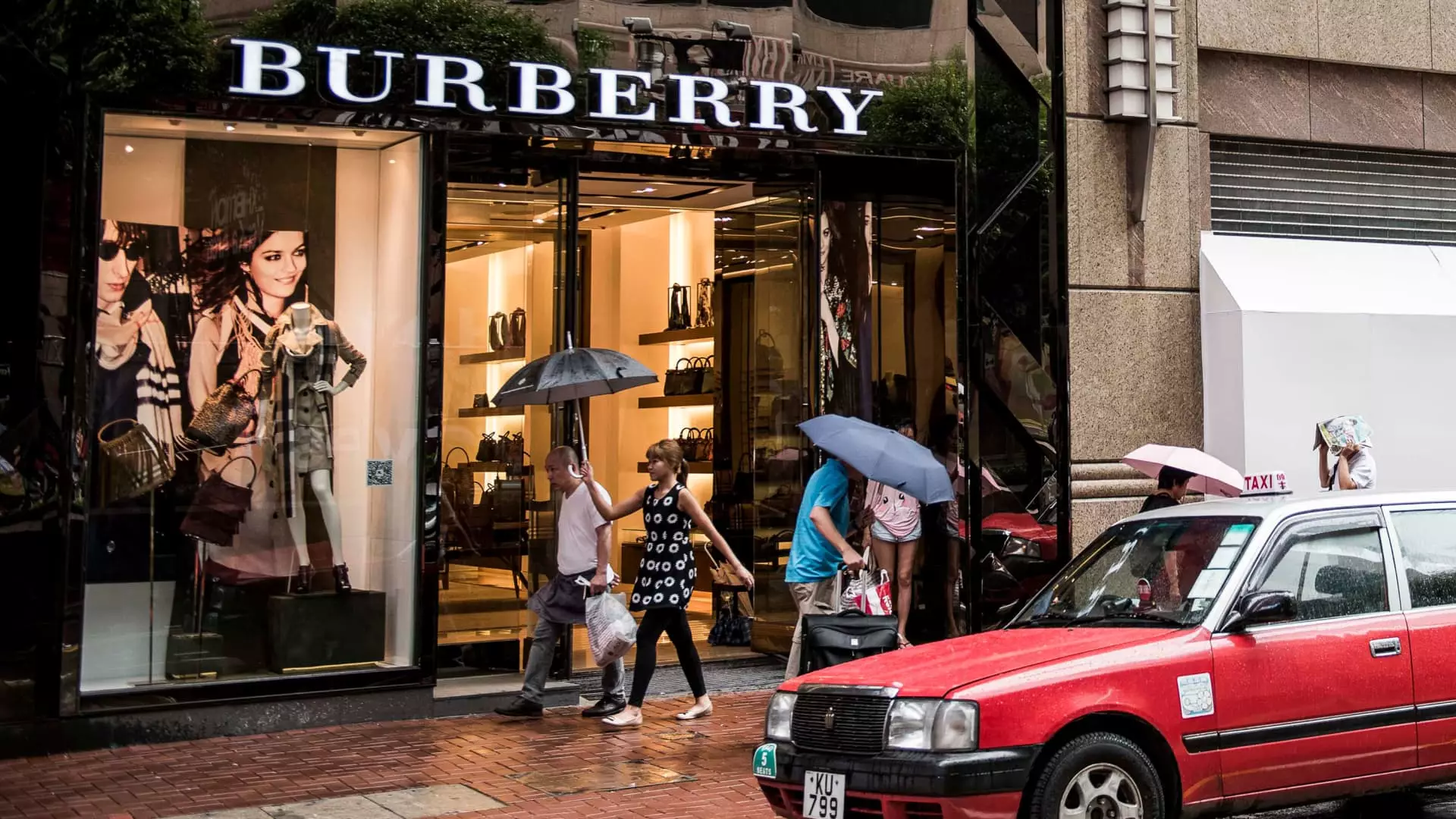Burberry, a renowned British luxury brand with a history spanning over 168 years, faced a significant setback as its shares plummeted by over 15% following a lackluster first-quarter performance. The company issued a profit warning, signaling a potential operating loss for the first half of the year and a full-year operating profit below market expectations. This announcement led to the replacement of the CEO, with Joshua Schulman, a seasoned executive with experience at Michael Kors and Coach, stepping in to lead the brand.
One of the key factors contributing to Burberry’s decline was the sharp decrease in comparable store sales, which fell by 21% in the 12-week period ending on June 29. Sales across different regions, including EMEIA, Asia Pacific, and the Americas, experienced significant declines, reflecting a broader trend of weakened luxury demand in key markets. Analysts have expressed concerns about the company’s ability to address these challenges and regain its market share in the face of shifting economic conditions and evolving consumer preferences.
Addressing the Root Causes
In response to these challenges, Burberry has outlined a series of strategies aimed at reinvigorating its brand and reconnecting with its core customer base. The company plans to focus on diversifying its product offerings to include a broader range of everyday luxury items, refining its brand communications, refreshing its online presence, and implementing cost-saving measures. These initiatives are designed to not only improve the company’s financial performance in the short term but also strengthen its competitive position and support long-term growth prospects.
As Burberry navigates through a period of uncertainty and market volatility, the appointment of a new CEO and a renewed focus on brand revitalization signal a commitment to addressing the root causes of its recent struggles. By leveraging its iconic heritage, expanding its product portfolio, and enhancing its customer engagement strategies, Burberry aims to position itself for sustained success in an increasingly competitive and challenging market environment. The company’s ability to adapt to changing consumer trends, optimize its operational efficiency, and deliver a compelling value proposition will be crucial in shaping its future trajectory and driving sustainable growth.

